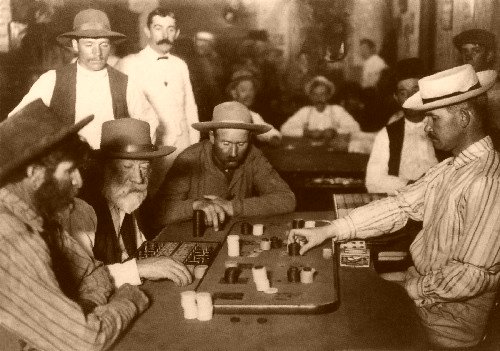Games Britannia Part 3
In an earlier blog I spoke about the first part of the Game Britannia programme where Benjamin Woolley Introduced us to some games that had an impact on our society in the past. In part 3 he brings us to the present with how games are and where they originated from. He looked at some milestones in Game Design that have had high influences on what we play today.
Woolley Spoke about Lord Of The Rings as one of his favorite books. He mentions how amazed he was when he looked at the map placed at the back of the book and how he imagined what it would be like to actually live in this world. For me this set up the theme where he talks about how designers have tried different ways in which to Immerse the player into their world.
Dungeon and Dragons back in the 1970's was made in California and revolutionalised board games and the way we play them. There would be a Dungeon Master who carried the narrative throughout for the players and offer them choices within a scenario of his/her choice. One the players made the choice (eg to fight the goblins they have been pitted against) they would then roll a dice to decide the outcome. This gave the feel of actually exploring the world you are in and your choices would ultimately decide your path. People were able to escape their real lives (which were quite hard times in the 1970's) and embark on an adventure using this game and the interaction it encouraged with fellow players.
At this time having a home computer was very rare and so the games we could play at home were usually on a board. This opened the doors for arcades where people would go to enjoy digital games without spending vast amounts on a pc. From arcades we naturally moved on to home consoles in which by today's standards were very basic games but also addictive.
Woolley then speaks to the creators of Elite, a game that introduced a 3D feel based in space and also had a bartering system in which you buy parts for your ship. This focuses on the players choices in what to buy for their ship, while playing it Woolley decided to buy a load of guns for his ship, in turn this resulted in hostile enemies attacking you.
Another Milestone in Games was made by Lionhead called Black and White. The creator peter molyneux wanted to give players the feeling of being a god in which you can control the entire world and it's inhabitants. This was almost an upgraded version of a previous game he created called populous. Similar to Elite, the choices the player makes has an effect of how the game will play.
From just talking about these games I feel the pattern of what game designers then (and the good ones today) were trying to follow could be not be clearer. From the huge success of Dungeon & Dragons Which asked player to imagine their world and get lost in it, to the digital that give you the world visually to explore in a similar fashion.
Now games wanted to put the player in the driving seat and give depth to the story of the character they are playing as. A good example of this Tomb Raider in which developers had given an amazing 3D environment to explore and on top of that, given reasons for the goals of the character and enemies. There have been similar games to this that have also caused controversy in society because people thought the message being sent to the player was morally wrong. The obvious example of this is Grand Theft Auto, where you can explore the world you are in and the attention to detail in this world is amazing. Although it's realistic, the scenarios of what you can do with your player is not acceptable in society (obviously). For example driving a tank through the streets is not a common site in the real world but in Grand Theft Auto it is almost expected of you.
At present we see many examples of where players can actually design levels for the game themselves and then publish them online for people to play. This has blurred the line between developer and player but allows the world the developers create to be expanded by the people playing it. We can see that this is similar to the Dungeon Master in Dungeon & Dragons where the possibilities are only limited by the tools and the imagination of the player.










